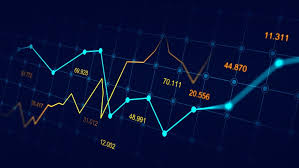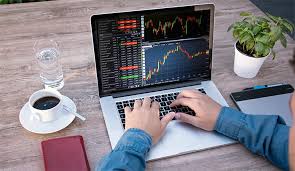
Understanding Forex Trading: An Example for Aspiring Traders
Forex trading, or foreign exchange trading, involves buying and selling currencies in the global marketplace. It’s one of the most dynamic and liquid markets available, with trillions of dollars exchanged daily. For aspiring traders, understanding how to navigate this market can be daunting. In this article, we’ll explore a detailed example of forex trading to illustrate the fundamental concepts and strategies involved. Additionally, you can find useful resources and services from forex trading example Trading Broker UZ to enhance your trading knowledge and skills.
What is Forex Trading?
Forex trading is the process of transferring currency from one person to another at an agreed price. It’s done in pairs, with each currency pair showing how much of the second currency is needed to purchase one unit of the first currency. For example, in the EUR/USD currency pair, if the price is 1.10, it means that 1 Euro is equivalent to 1.10 US Dollars.
The Components of a Forex Trade
To illustrate forex trading, let’s take a closer look at its components:
- Currency Pair: Every forex trade involves a currency pair, such as GBP/USD or USD/JPY.
- Bid and Ask Price: The bid price is the price at which the trader can sell the base currency, while the ask price is the price at which the trader can buy it.
- Spread: This is the difference between the bid and ask price, representing the broker’s profit.
- Leverage: Forex brokers offer leverage, allowing traders to control a larger position size with a smaller amount of capital.
- Margin: The amount of capital required to open and maintain a leveraged position.
A Practical Example of a Forex Trade
Let’s illustrate a typical forex trading scenario:

Scenario
Imagine that you believe the Euro (EUR) will strengthen against the US Dollar (USD). Currently, the EUR/USD pair is trading at 1.1000. You decide to buy 10,000 units of EUR (which represents 0.10 lots). Since you are buying, you are entering at the ask price.
Calculating the Trade
Based on the current exchange rate:
- Buy Price (Ask): 1.1000
- Units: 10,000
- Trade Value: 10,000 EUR x 1.1000 = $11,000 USD
You have utilized leverage in this position. If your broker offers a leverage of 100:1, you will only need $110 to open this trade as margin (11,000 / 100).
Market Movement
After a few days, the EUR/USD rate rises to 1.1200. You decide to close your position:
- Sell Price: 1.1200
- New Trade Value: 10,000 EUR x 1.1200 = $11,200 USD
Calculating Profit

Your profit from this trade can be calculated as follows:
Profit = (Sell Price – Buy Price) x Units = (1.1200 – 1.1000) x 10,000 = $200 USD
Risk Management in Forex Trading
While the potential for profit in forex trading can be significant, the risks are equally important. Implementing a robust risk management strategy is crucial:
- Setting Stop-Loss Orders: Place orders to automatically close your trade at a predetermined loss level.
- Diversifying Your Trades: Avoid putting all your capital into one trade or currency pair.
- Using Appropriate Leverage: High leverage can amplify your losses as well as your gains.
- Staying Informed: Keep abreast of global economic indicators and news that may affect currency values.
Choosing a Forex Broker
Choosing the right broker is a critical step in your trading journey. Look for brokers that are regulated, offer competitive spreads, and have a good reputation for customer service. Furthermore, platforms like Trading Broker UZ provide educational resources and demo accounts for practice, which can significantly enhance your trading experience.
Conclusion
Forex trading is a fascinating yet complex field that requires knowledge, practice, and a disciplined approach. By understanding the mechanics of trading, properly managing risks, and choosing the right broker, you can enhance your chances of success in the forex market. Remember, every successful trader started as a novice, and gaining experience through practice is vital. Always stay curious and keep learning about market trends and strategies.
Further Learning Resources
To further your understanding of forex trading, consider exploring additional resources such as online courses, webinars, and trading simulators, which can provide valuable insights and practice opportunities. Whether you are just starting or looking to refine your strategy, continuous learning is key to mastering forex trading.



